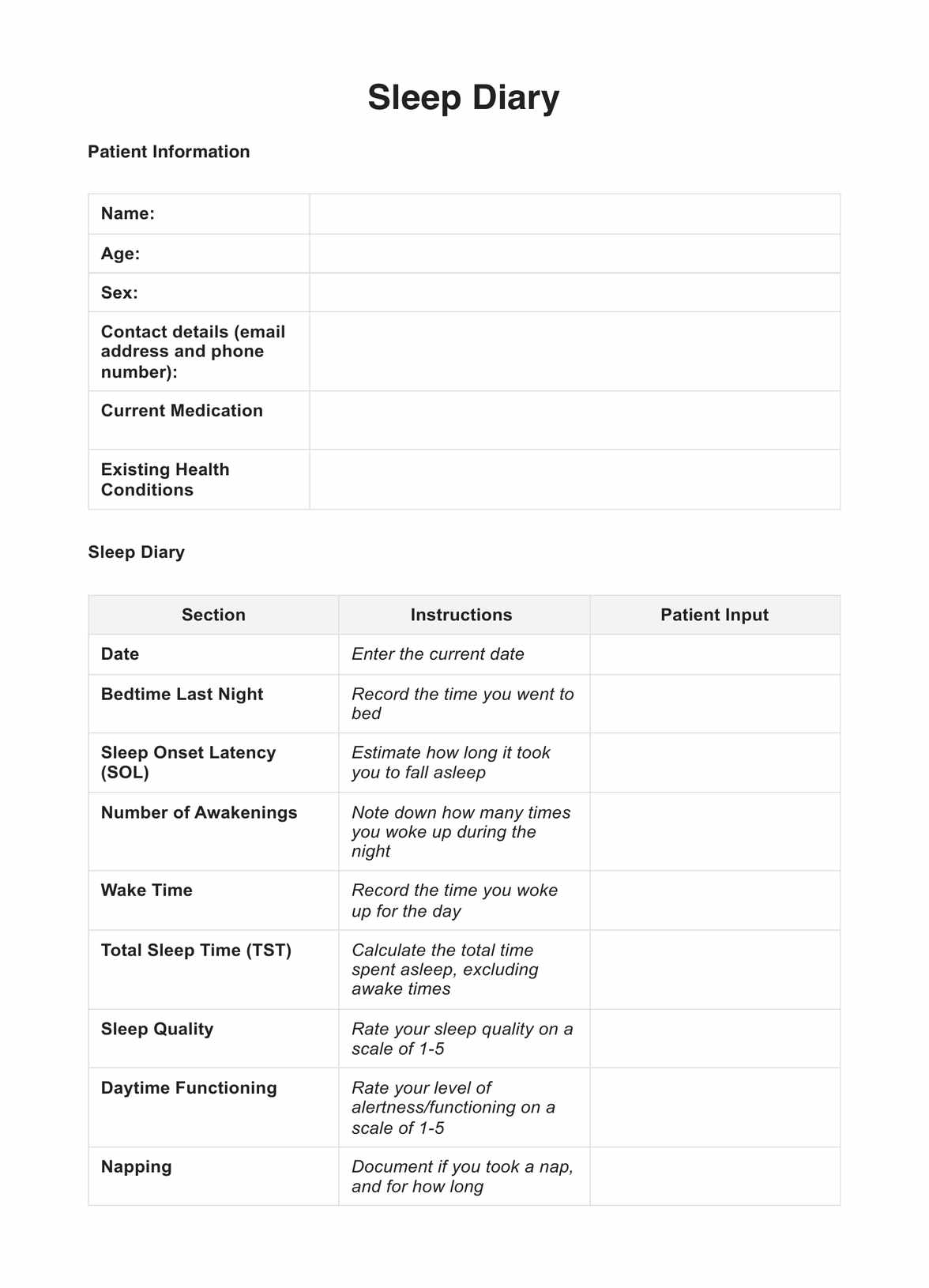Absolutely! Sleep Diaries are valuable tools for monitoring a variety of sleep disorders, including sleep apnea, circadian rhythm disorders, and parasomnias. The detailed insight it provides can help shape effective treatment strategies.

Sleep Diary
Discover our full guide on Sleep Diaries, a crucial tool for healthcare pros in managing & understanding patients' sleep patterns. Get a free PDF template!
Use Template
Sleep Diary Template
Commonly asked questions
It's recommended that patients keep a Sleep Diary for at least two weeks. This period allows you to observe any patterns or issues with their sleep that may not be evident in a shorter period.
Yes, the Sleep Diary can be used alongside other sleep assessment tools like actigraphy or polysomnography. It provides a subjective perspective that complements the objective data from these devices.
EHR and practice management software
Get started for free
*No credit card required
Free
$0/usd
Unlimited clients
Telehealth
1GB of storage
Client portal text
Automated billing and online payments











